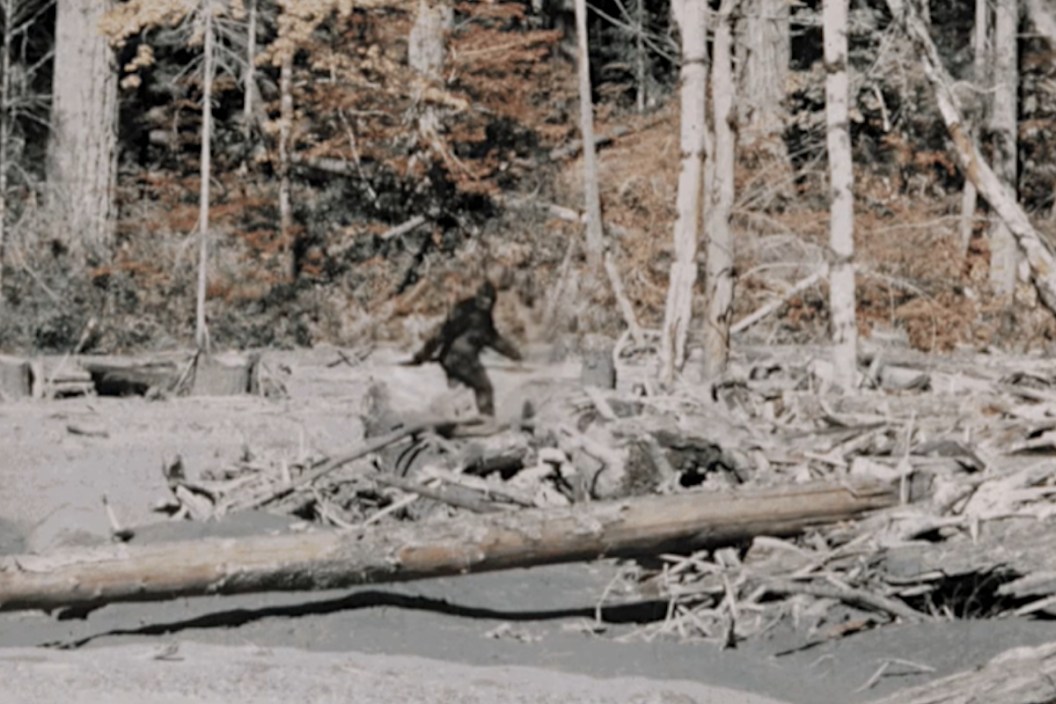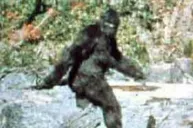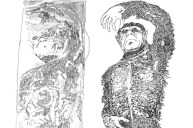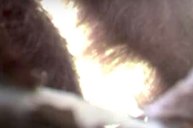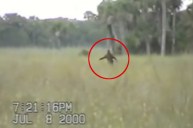This is the full history behind the famous Patterson-Gimlin Bigfoot film.
Whether you believe the tales or not, who doesn't love a good bigfoot story? Legends of the large, hairy, man-like animal that is said to stalk the forests of the United States and Canada have persisted for years. There are plenty of famous bigfoot encounters on the records, but none more famous than that allegedly had by filmmakers Roger Patterson and Robert Gimlin in Northern California on October 20, 1967.
The alleged bigfoot encounter resulted in one of the most disputed one-minute long pieces of film footage in history. The figure in the footage has become nothing less than a cultural icon. Bigfoot believers think the footage is a real example of the elusive beast known as Sasquatch. Skeptics say it's nothing more than a hoax with a man in an ape suit.
What's the real story? Well, let's look at the Patterson-Gimlin film and the aftermath of it in depth to see if we can dig up some answers on this most famous of bigfoot sightings more than 50 years after the fact.
Background on Patterson and Gimlin
The two men who made the film that many bigfooters hold as proof of the cryptid's existence were cowboys in the early 1960s and often participated in rodeos. This is how the two men met. It was in 1959 that Patterson first read stories about the creature. He was immediately intrigued. While stories of creatures that seem to resemble sasquatch go back hundreds of years, back into Native American legend, it was the late 1950s that the name "Bigfoot" finally started to go mainstream with the discovery of big footprints near Bluff Creek by the road construction crew led by Jerry Crew in 1958. A local newspaper covering the discovery coined the phrase "bigfoot" and a cultural phenomenon was born.
In 2002, it was claimed that the large footprints found by Crew were a hoax after the death of Ray Wallace, who was also a road construction worker and a known jokester. Wallace took the secret of the tracks to his grave, but his family unveiled the prank to the mainstream media after his death in 2002. They even had the wooden feet used to make the tracks to back up their story.
We mention this because Patterson visited the Bluff Creek area in both 1962 and 1964. It was that second visit where Patterson allegedly saw his first set of bigfoot tracks. It's unknown how genuine those tracks may have been, but it didn't matter. Patterson became even more intrigued and decided to seek fame and fortune by hoping to capture more conclusive evidence of the beast.
Patterson led a few other expeditions and even self-published a couple books on the subject. In 1967, he started working on a bigfoot film with Bob Gimlin and several other volunteers. However, he was having trouble raising funds and it doesn't seem the project was ever completed. He realized he needed something bigger to prove the creature's existence.
In any case, Patterson had been monitoring reports of the creature in the area of the Six Rivers National Forest, which is close to Willow Creek, California, a famed sasquatch hotspot. Patterson convinced Gimlin to accompany him on a trip into the wilderness on October 20, 1967 and what happened next began a controversy that has been going for over 50 years now.
The Sighting.
The story has been told a thousand times now, but it's worth revisiting it as Patterson and Gimlin claimed it happened. The two cowboys said they were riding their horses along Bluff Creek sometime after 1 p.m. in the afternoon of October 20, 1967. As the two men came around a pile of logs in the creek bed, the creature stood up and they spotted it for the first time. The beast then turned and started walking away from the duo. At this point, Patterson claimed his horse panicked and reared up, throwing him. He then had to hastily fish his rented 16mm camera out of a saddlebag and started running towards the creature as he started the film rolling.
It was around this time that Patterson said he asked Gimlin to "cover him." The two men had previously discussed what they would do if they encountered the creature and they had agreed they would not shoot the creature unless it threatened them. Gimlin dismounted his horse with the rifle in hand as Patterson continued filming. In an August 2020 interview with knkx.org, Gimlin recalled this moment more than 50 years later.
"There was a bigfoot standing there just on the other side of the crick from us," Gimlin said. "But it just immediately turned and started walking away. Well, Roger by then had got his camera out of the saddlebag on his horse and he was running across the crick there. He hit the other side of the bank, and stumbled and kind of fell down on his elbows. And that's when it made that famous head turn, is when I stepped down off the horse."
It's worth noting that Gimlin says he never once pointed the rifle in the alleged creature's direction. Patterson estimated he got as close as 80 feet to the beast. As the creature vanished into the woods, Patterson ran out of film. Gimlin followed the creature on horseback for a short distance until it finally vanished into some thick brush. As quickly as it had started, the encounter was over.
The film is unleashed on the world.
Patterson wasted no time in having the film developed. Plaster casts were also taken of footprints on the scene, but the film was not welcomed as warmly by the scientific community as Patterson may have intended. Most experts met the film with raised eyebrows of skepticism at public showings. However, the film did make national news headlines and Patterson made many appearances on public talk shows in the year following the incident. The film also circulated showings around Europe with Canadian bigfoot researcher Rene Dahinden, who later had a character in the movie "Harry and the Hendersons" modeled after him. The footage was also used in a BBC docudrama which Patterson toured with for a while.
Things get a little complicated in the encounter's immediate aftermath. Patterson was nearly arrested for not returning the camera used in the filming to a Yakima, Washington camera shop. Those charges were dropped after he returned it. However, shortly after the filming, Gimlin and Patterson's friendship started to fall apart. Gimlin claimed Patterson and a promoter allegedly stiffed him on any shares in the proceeds from showcasing the film. Patterson also allegedly kept touring with an actor hired to portray Gimlin.
Patterson never really got to see how much his film of "Patty," as the creature came to be called, would affect pop culture. He developed Hodgkin's lymphoma a few years later and died in 1972. Allegedly, on his deathbed, Patterson told Peter Byrne, another bigfoot researcher that he wished he had simply shot the creature and brought the body in. Gimlin says he eventually forgave Patterson after he apologized on his deathbed. Still, Gimlin has noted many times the aftermath was difficult for his family, especially when people started going after his wife.
"They'd razz her about it where she was working, and she'd come home a bawlin' and saying, oh God Bob, I wish you had never went down there with Roger. I said I do too," Gimlin told knkx.org in 2020.
The harassment got to the point where Gimlin quit talking about the incident for almost 35 years before he finally started giving interviews again. He has also become a prominent figure at bigfoot conferences, even at 84 years old.
Was it real or a hoax?
Gimlin is still adamant that what he saw was a living, breathing creature 53 years after the fact. However, at the same time, Gimlin has stated in some interviews that there is the possibility he was fooled. After all this time, it seems likely that if it was indeed a hoax, Gimlin wasn't in on the joke.
At least two people have made claims that the footage is a hoax. In 2002, Philip Morris, the owner of a costume shop in North Carolina, claimed that in 1967, he sold Patterson an ape suit. He also claims that Patterson called him asking for ways to improve the look of the costume. The only problem with this claim is that Morris has not shown any evidence to back it up.
Then there is Bob Heironimus, who in 1998 claimed that he was the man wearing that suit in the footage. This resulted in a book called "The Making of Bigfoot" written by Greg Long in 2004. The book claims that the suit Heironimus claims to have worn is the same one sold to Patterson by Morris. However, the descriptions of the alleged fur suit seem to vary between Heironiumus and Morris. For instance, Morris described the suit as being one piece while Heironiumus claimed there was a top and bottom half like a shirt and pants. It's worth noting that Heironiumus later took and passed a polygraph test in 2005, but so did Patterson shortly after the film's release.
Many people turned to Hollywood for answers to this mystery. What did top special effects experts think? Bob Gimlin cited Bill Munns in a 2017 interview with BBC Canada.
"If they've ever heard of Bill Munns, who was a special effects man in Hollywood for 30 some years, and he went into that film footage to prove that it was false. After he studied it for so long he said, 'I was the best there was in special effects,' and he said, 'I couldn't have come up with anything close to a man in a suit that looked like that.'"
Other special effects experts like Rick Baker and Stan Winston both said the film was a hoax. John Chambers, who produced the costumes for "Planet of the Apes," just one year after the Gimlin footage was filmed, felt that if it was a suit, it had to be custom-made and not something store-bought. Make of all that what you will.
Scientific opinions
While opinions in Hollywood are divided, sasquatch and abominable snowmen researchers seem to have a slightly more favorable opinion. Idaho State University professor of anatomy and anthropology, Jeff Meldrum, has defended the film often over the years. He wrote the book "Sasquatch: Legend Meets Science."
Meldrum has argued that the film cannot be a suit because he can identify specific muscle groups moving under the fur. Dr. Grover Krantz, an anthropology professor initially dismissed the film as a hoax until studying it more in full. He also became convinced the footage showed muscle movements that cannot be recreated with a costume. John R. Napier, a primatologist and paleoanthropologist said the film was a hoax, albeit a "clever" one. Zoologist Bernard Heuvelmans said the creature's hair was all wrong and indicative of a hoax. Plenty of other scientists have also criticized other parts of the animal's appearance, from the apparent breasts to the pads of the animal's feet.
Others have debated that the animal's movements in the footage may not be entirely accurate to how it looked in real life due to the fact that the footage was filmed on a Cine-Kodak camera at 18 frames per second instead of the usual standard of 24. Scientific attempts to re-create the footage at the actual film site have been met with mixed success over the years. Some of these re-creations come really close and seem to indicate a hoax while believers maintain that modern costume technologies are far more advanced than what was available in 1967.
Overall, it seems no consensus on the film has been developed and due to the film's poor quality, that probably won't change anytime soon.
It will likely never be completely proven or disproven.
Unfortunately, with all this time passed, we may never know definitively what happened in that dry creek bed back in 1967. Hardcore believers like Cliff Barackman from Animal Planet's "Finding Bigfoot" will likely continue to maintain the film is genuine while skeptics will continue to point out the various flaws in the footage and story.
In the end, at least we can say this is where we got THE definitive image of bigfoot. And it has made for a fun mystery at the least. Who doesn't enjoy a good mystery? Especially when you're camping or spending time in the great outdoors!
For more outdoor content from Travis Smola, be sure to follow him on Twitter and check out his Geocaching and Outdoors with Travis YouTube channels.
NEXT: THE AXIS DEER AND HOW THEY'RE IMPACTING PARTS OF THE UNITED STATES
WATCH
